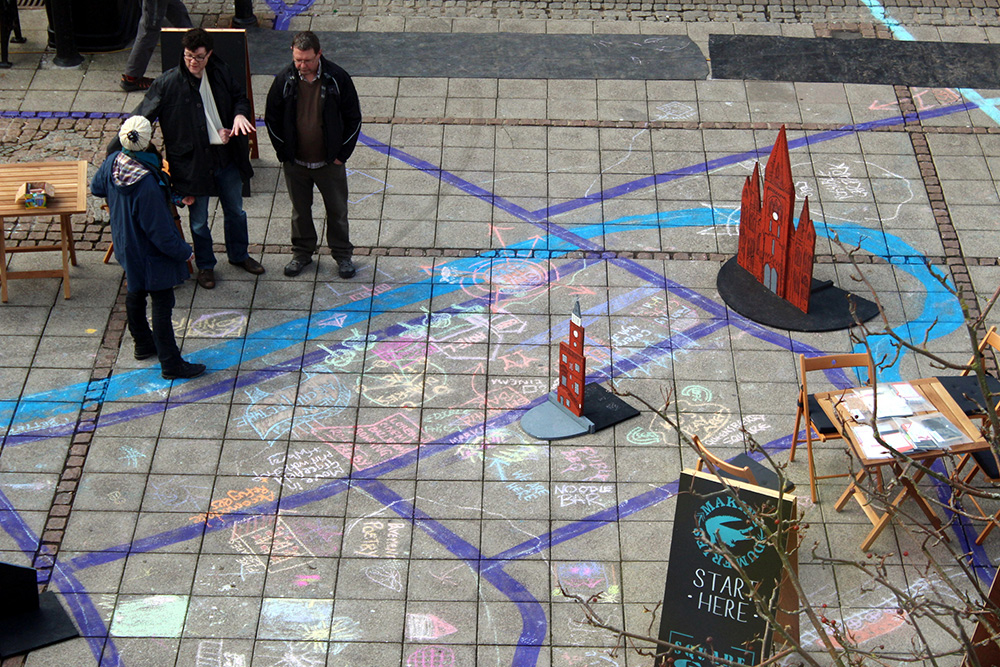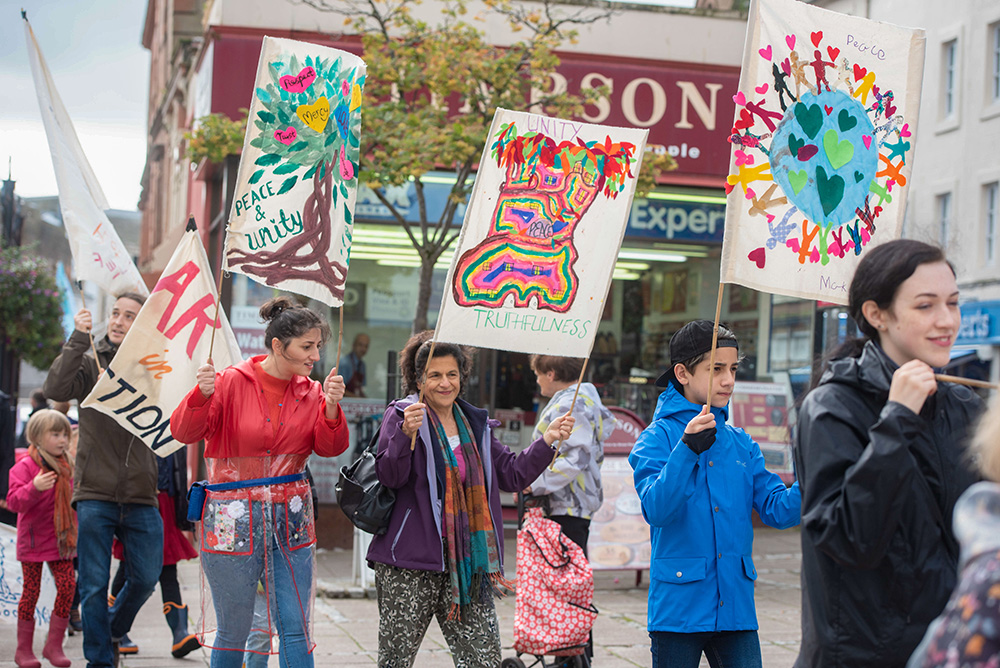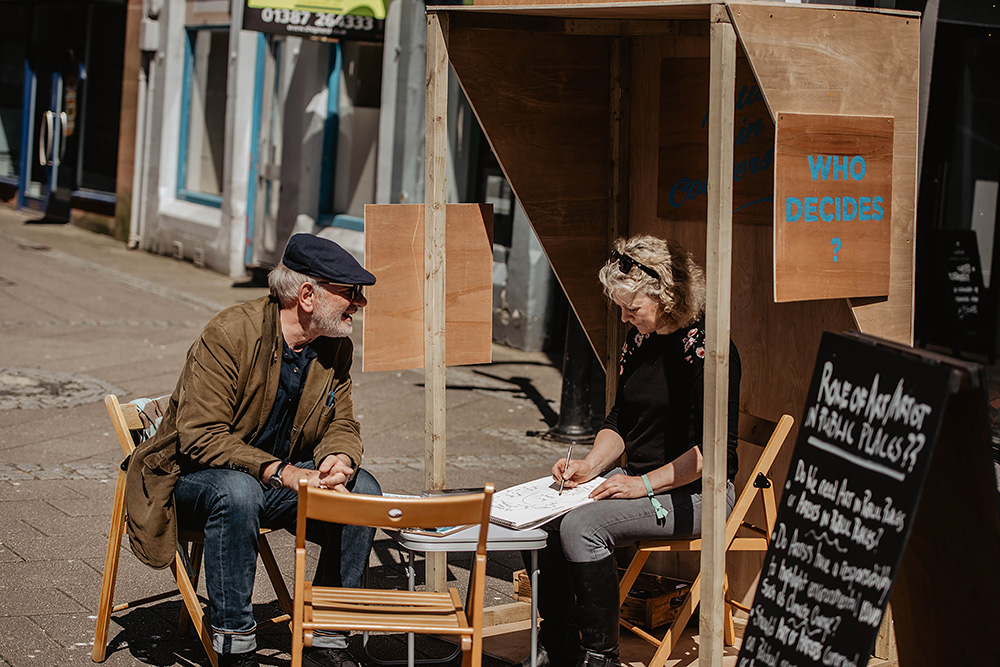Context:

The Stove Network was started by a small group of artists in 2011, who wanted to use creative practice to aid the regeneration of the rural market town of Dumfries, Scotland (UK). Stove used participatory events to engage townspeople in imagining futures for the town centre, creating a community-led vision for regeneration, as well as platforming the arts through a range of festivals and events.
Stove followed an emergent process of co-creation with local people, building capacity in the town and its organisation, eventually leading to the regeneration of a section of the high street called Midsteeple Quarter. It is the only arts-led development trust in Scotland.
Transformative creative practice:

“It’s about visioning for places, so using creative practice as a way of visioning, and getting under-represented voices being heard in local decision making and place planning, which I think comes into the sustainable future conversation quite strongly” – Matt Baker
The Stove Network’s approach embeds arts practice within communities, by creating a physical hub that features a venue, café and offices on Dumfries High Street. Stove uses creative events at the hub (and beyond), to gather people together in engaging ways, enabling their voices to be heard within planning and regeneration processes that may otherwise feel closed or inaccessible. Stove’s approach has been so successful that they have started working at a regional level. The ‘What We Do Now’ project aims to re-create creative place hubs in five towns across Dumfries and Galloway, to enable other communities to adopt arts-led processes that fit their localities.
Connections to eco-social sustainability:

Stove’s place-based work engages holistically with the environmental aspects of local regeneration. For example, the Nithraid project features an annual river race and festival that helps the community to forge relationships with the town’s river that are both practical and meaningful, against the backdrop of flood management consultations in the town.
As an organisation, they input into regeneration strategies that have practical consequences for the management of the local environment, and also deal with future action on climate change, equality, diversity and inclusion.
On learning and evaluation:

The Stove Network team have been keen to document their approach, alongside other social innovations in the Dumfries and Galloway region. They led the Embers: Creative place-making in South Scotland research project (supported by the South of Scotland Economic Partnership and the Carnegie Trust UK). Over a 6 month process of reflection and consultation, they worked with local organisations in Dumfries and Galloway, and policy-makers to create a framework about what works in creative place-making.
“The framework is more like an approach to working, it’s like a values and principles based approach because again the project looks very different in each place because of the different set of circumstances… So, it’s like who needs to be heard, who’s not being heard who’s involved in decision making? It’s more like a set of interrogations and principles” – Katharine Wheeler
Learn more:
Find a longer and more detailed case study in the CreaTures-commissioned report Transforming futures through place-based creative practices, written by Gemma Lawrence and Emma Hall from Creative Carbon Scotland.
Visit The Stove Network website – https://thestove.org/
